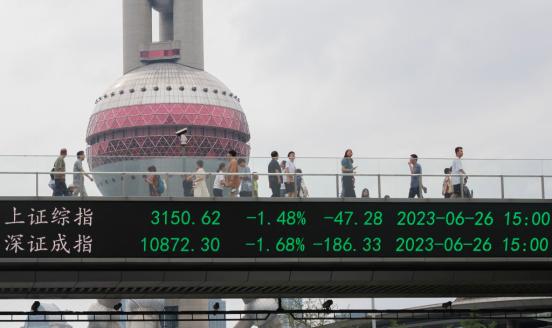Southbound flows rescuing Hong Kong equity market
China seems to be coming to the rescue as social unrest affects the city’s financial market, but it’s probably only for arbitrage reasons
Although 2019 has been an annus horribilis for Hong Kong, Chinese investors have actually increased their inflows toward the Hang Seng Index. In particular, Hong Kong has experienced the longest consecutive period of net southbound inflows into the equity market from the Shanghai and Shenzhen stock markets (37 days until September 11). Such behavior may look strange, which explains why some analysts have been wondering whether such a move was engineered by the central government as a way to cushion the negative impact of Hong Kong’s social unrest on the city’s financial market.
The first thing to note is that Chinese investors have become much more relevant for Hong Kong equities since the Stock Connect was first launched in 2015, with a surging share in cash equity transactions from 13% in 2014 to 28% in 2018 among foreign investors. The positive inflows during the past few weeks, notwithstanding the doom and gloom about Hong Kong, can be associated to the expectation of a weaker yuan and cheaper valuations.
On the former, Hong Kong is obviously the easiest channel for mainland Chinese investors to diversify into other currencies, which is not only because of the easy access to the Stock Connect but also to the Hong Kong dollar’s tight peg to the US dollar. In addition, cheaper valuations in Hong Kong clearly help, especially if the underlying of the purchased shares are the same in Hong Kong and mainland China. This is the case of the dual-listed firms, whose shares listed in Hong Kong (H-shares) have become much cheaper than those of mainland China (A shares). In fact, the premium between A shares and H shares has surged to around 30%.
Cheaper valuations, more than any kind of general support to Hong Kong’s fledging financial markets, seem to be behind Chinese investors’ move, at least from the perspective that their allocation in Hong Kong equities has been disproportionally concentrated in dual-listed shares. In particular, since the yuan depreciated abruptly on August 5, trespassing 7 to the US dollar, 51% of total inflows through the Stock Connect went to dual-listed shares. This is a massive over-allocation into dual-listed shares as they only account for 23% of Hong Kong’s total equity market.
In essence, Chinese investors have increased their interest in Hong Kong’s stocks at a very difficult time in the city, but the reason seems to be an arbitrage opportunity more than any other more general reasons.
Going forward, unless Hong Kong’s economic situation suddenly surprises on the positive side or expectations on the yuan move to an appreciation against the US dollar, both very unlikely, we should expect dual-listed shares in Hong Kong to perform better than pure domestic ones. Finally, our conclusion on the arbitrage reasons behind Chinese investors’ interest in Hong Kong is not fully incompatible with the hypothesis of a more general support for the Hang Seng Index. However, it does show the initial interest has gone to the most obvious part of the market, in terms of arbitrage opportunities, namely the dually listed shares.



